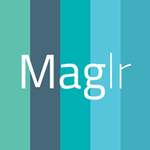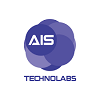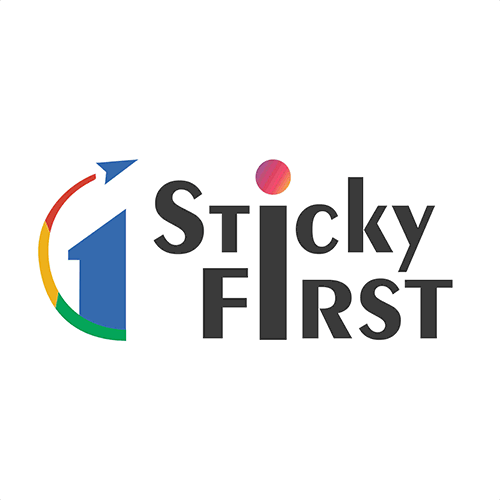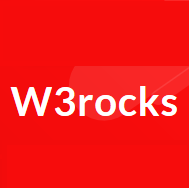Description

Maglr

Wide Angle
Comprehensive Overview: Maglr vs Wide Angle
Maglr Overview
a) Primary Functions and Target Markets
Maglr is a digital content creation platform designed to enable users without extensive technical skills to create interactive and visually engaging content. Its primary functions include:
- Content Creation: Maglr offers tools for designing and publishing interactive content, such as magazines, sales presentations, infographics, landing pages, and other marketing materials.
- Easy-to-Use Interface: The platform provides a drag-and-drop editor with a variety of templates and design elements that cater to non-designers.
- Integration: Maglr provides integration capabilities with other platforms and tools to streamline content distribution and analytics.
Target Markets:
- Marketing Teams: Businesses looking to enhance their marketing materials with interactive and visually appealing content.
- Digital Agencies: Agencies seeking a tool to quickly create high-impact digital content for their clients.
- Corporate Communications: Organizations aiming to improve internal and external communication through interactive presentations and reports.
b) Market Share and User Base
Maglr has a niche market presence focusing on companies and agencies looking for dynamic content creation solutions without needing extensive technical resources. While specific market share data might not be publicly available due to the targeted nature of its offering, the platform is popular among small to medium-sized enterprises (SMEs) and creative agencies that prioritize design flexibility and engagement in their content.
c) Key Differentiating Factors
- Ease of Use: Unlike traditional design software that often requires a steep learning curve, Maglr's intuitive editor is a significant advantage, especially for users with little design experience.
- Templates and Customizability: Offers a wide range of templates tailored for different industries and purposes. Users can also customize these templates to align with their brand aesthetics and requirements.
- Interactive Elements: Maglr focuses on interactive HTML5 content, allowing users to incorporate interactive features such as animations, scrolling effects, and embedded multimedia.
- Focus on Digital Storytelling: The platform emphasizes narrative and storytelling, which is appealing to brands looking to create compelling narratives around their products or services.
Wide Angle Overview
a) Primary Functions and Target Markets
While it is less clear what specific product "Wide Angle" refers to without additional context, it can generally be assumed as a type of software or service aimed at broader data management or visual production tasks. However, this could represent anything from a photography equipment brand (e.g., wide-angle lenses) to a project management tool, depending on the exact sector.
If hypothetically considering "Wide Angle" as a business tool:
- Project Management or Analytics: It might be a platform involving task management, scheduling, or data analysis.
- Photography Equipment: In another context, it could relate to lenses designed for capturing larger scenes.
Target Markets:
- Project Management: Businesses requiring tools for better task coordination and team collaboration (if considering software).
- Photographers/Videographers: Professionals in need of equipment to capture wider shots (in the context of lenses).
b) Market Share and User Base
The market share and user base comparison would depend on the specific industry "Wide Angle" is situated in. If software, the market can be competitive with significant players dominating, whereas in photography, wide-angle lenses have their specific user base among professionals and hobbyists.
c) Key Differentiating Factors
- For Software: May focus on particular integrations or unique collaborative features if considering project management.
- For Photography: Lens quality, field of view, and compatibility with cameras might be differentiators.
Conclusion
If you provide additional context or clarification on what specifically "Wide Angle" refers to, I can tailor the overview to be more precise regarding its functionalities, comparisons, and differentiation in its respective market.
Contact Info

Year founded :
2014
+31 76 543 0852
Not Available
Netherlands
http://www.linkedin.com/company/maglr

Year founded :
Not Available
Not Available
Not Available
India
http://www.linkedin.com/company/wide-angle-film-society
Feature Similarity Breakdown: Maglr, Wide Angle
To provide a comprehensive feature similarity breakdown for Maglr and Wide Angle, we'll examine their core features, user interfaces, and any unique features that distinguish them.
a) Core Features in Common
-
Content Creation: Both platforms are designed to facilitate the creation of digital content. They offer tools to build interactive and visually appealing materials, such as presentations, reports, and infographics.
-
Interactivity: Maglr and Wide Angle support interactive elements, allowing users to engage their audiences with dynamic content like clickable buttons, embedded media, and animations.
-
Responsive Design: They ensure that created content is responsive, automatically adjusting to fit various screen sizes and devices.
-
Template Library: Both platforms provide a library of templates, enabling users to start their projects with pre-designed layouts that can be customized to meet specific needs.
-
Branding Options: Users can maintain brand consistency by applying custom branding elements such as logos, color schemes, and fonts across projects.
-
Analytics: They offer analytical tools to track the performance and engagement levels of published content, providing insights into audience interactions and preferences.
b) User Interface Comparison
-
Maglr: Known for its intuitive drag-and-drop interface, Maglr caters to users of varied skill levels. The platform emphasizes ease of use, with a clean interface that guides users through content creation without overwhelming them with complex options.
-
Wide Angle: The user interface of Wide Angle is similarly user-friendly, focusing on simplicity and efficiency. It provides an organized workspace with clear navigation, but it might offer slightly more advanced customization options, which could cater to users with specific design needs.
c) Unique Features
-
Maglr:
- Storytelling Focus: Maglr places a significant emphasis on storytelling, offering specialized tools and templates designed to enhance narrative-driven content.
- Magazine-Style Editing: It supports a magazine-style layout editor, which is ideal for creating complex, multi-page documents that involve a lot of detailed design work.
-
Wide Angle:
- Collaboration Tools: Wide Angle might have more robust collaboration features, allowing multiple users to work on a project simultaneously, which is valuable for teams working remotely.
- Advanced Data Integration: It may offer enhanced integration with data sources, making it easier to incorporate live data feeds into presentations and reports for real-time updates.
Each platform has its strengths, and the choice between the two would depend on the specific needs of the user, such as the importance of collaboration, the level of storytelling required, or the necessity for advanced data integration.
Features

Not Available

Not Available
Best Fit Use Cases: Maglr, Wide Angle
Maglr and Wide Angle are both tools that serve specific niches in content creation, presentation, and data analytics, respectively. Below is a breakdown of their best fit use cases, the types of businesses or projects they are most suited to, and how they cater to different industries or company sizes.
Maglr
a) Types of Businesses or Projects:
-
Marketing Agencies & Creative Teams: Maglr is ideal for marketing teams that need to create visually engaging content without relying heavily on technical development resources. It allows for the creation of interactive magazines, reports, or presentations that capture audience attention.
-
Corporate Communication: Businesses that need to improve internal communications can use Maglr for compelling company updates or digital newsletters.
-
Educational Institutions: Universities and training providers can use Maglr to develop interactive learning materials and educational content that enhances student engagement.
d) Industry Verticals and Company Sizes:
-
Publishing Industry: For digital publishers looking to innovate beyond traditional PDFs, Maglr provides a platform for interactive storytelling.
-
Small to Medium Enterprises (SMEs): Companies that require professional-grade presentations but lack extensive design resources are well-suited to Maglr’s user-friendly platform.
-
Retail & E-Commerce: Brands can leverage Maglr to create interactive product catalogs and enhance online customer experience.
Wide Angle
b) Scenarios Where Preferred:
-
Data-Driven Decision Making: Wide Angle is well-suited for organizations that heavily depend on data interpretation for strategic decisions. This includes scenarios where timely insights can drive business direction.
-
Data Visualization & BI Needs: Companies with extensive data analytics needs may prefer Wide Angle for its ability to turn complex data sets into clear and concise visualizations, aiding in better decision-making.
d) Industry Verticals and Company Sizes:
-
Finance and Insurance: These sectors can employ Wide Angle to analyze and visualize financial trends, risks, and performance metrics.
-
Large Corporations: Big companies with vast amounts of data benefit from Wide Angle’s robust analysis capabilities, supporting departments like sales, marketing, and operations.
-
Technology Firms & Startups: Companies with a tech focus can use Wide Angle to visualize technology trends, customer data, or software metrics, helping to drive strategic initiatives.
Conclusion
Maglr is particularly suitable for businesses looking to enhance their content delivery with interactive elements, while Wide Angle is the go-to for organizations needing advanced data analytics and visualization solutions. Maglr caters primarily to creative teams and marketers across various industries, whereas Wide Angle is fit for data-centric environments that demand meticulous analysis, often found in larger corporations and technical domains.
Pricing

Pricing Not Available

Pricing Not Available
Metrics History
Metrics History
Comparing teamSize across companies
Conclusion & Final Verdict: Maglr vs Wide Angle
When evaluating Maglr and Wide Angle, it's essential to consider the overall strengths and weaknesses of each platform and how they align with user needs. Here is a comprehensive assessment and conclusion to help users make an informed decision:
a) Best Overall Value
Maglr tends to offer the best overall value for businesses and individuals heavily focused on creating engaging, interactive, and visually appealing digital content without extensive technical know-how. Its intuitive interface, robust design tools, and versatility in content creation make it a highly valuable tool for marketers and content creators focusing on multimedia-rich publications.
b) Pros and Cons
Maglr
Pros:
- User-Friendly Interface: Maglr is designed for users with limited technical expertise, providing a drag-and-drop editor that simplifies the creation of interactive publications.
- Rich Design Features: Includes a variety of templates and design elements that enhance creativity and branding efforts.
- Versatility in Content Types: Supports a wide range of content formats, including interactive magazines, presentations, and infographics, making it suitable for diverse marketing needs.
- Collaboration Tools: Allows multiple users to work on projects simultaneously, which boosts productivity.
Cons:
- Pricing: May be on the higher side for small businesses or freelancers with limited budgets.
- Learning Curve: While user-friendly, mastering the more advanced features can take time for some users.
Wide Angle
Pros:
- Comprehensive Analytics: Offers robust analytical tools that help users track and analyze reader engagement and behavior effectively.
- Integration Capabilities: Works well with other marketing tools and platforms, facilitating streamlined workflows for large organizations.
- Focus on Data-Driven Insights: Ideal for users emphasizing content performance and audience analysis.
Cons:
- Complexity: Might be less intuitive for users without technical expertise, potentially requiring additional training or support.
- Niche Usage: More suited for organizations prioritizing data analytics over design and interactive content.
c) Specific Recommendations
-
For Creatives and Marketers: If you're a content creator, marketer, or designer looking to produce highly engaging and visually stunning content without diving deep into coding, Maglr could be the optimal choice. Its ease of use and design capabilities outweigh the cost for those prioritizing design and user engagement.
-
For Data-Driven Professionals: If analytical insights and data integration are critical for your operations, particularly for large-scale marketing campaigns or audience analysis, Wide Angle would be more fitting. Its robust analytics offer invaluable insights that can drive strategic decisions.
-
Consider Hybrid Needs: If your needs fall somewhere between content creation and analytical depth, you may need to evaluate which aspect of your workflow requires more enhancement and choose accordingly. Alternatively, consider a trial of each platform to get a hands-on feel of their unique features.
Ultimately, the decision should be driven by which platform aligns more closely with your specific business needs and strategic objectives.
Add to compare
Add similar companies




